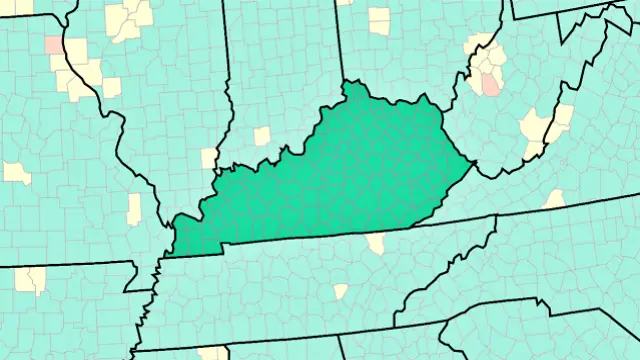Kentucky has a rich history, especially in the 18th century. This area was primarily Cherokee territory, but other tribes, like the Shawnee, often fought for control. Many trails, including the famous Great Warpath, crisscrossed the land. This region witnessed numerous battles, not only between Native tribes vying for hunting and farming grounds but also later with settlers who sought the same resources.
Because of this violent past, some writers claim that the name “Kentucky” comes from Native words meaning “dark and bloody ground.” This idea has been popularized in novels and historical accounts. A quick search on Amazon or Google reveals many books with this title, often linked to Kentucky’s history.
The Real Meaning of Kentucky
However, this claim is misleading. The Wyandot people called this area “Kah-ten-tah-teh,” which means “the land of tomorrow” or “the place where we shall dwell tomorrow.” The Shawnee referred to it as “Kain-tuck-ee,” meaning “at the head of the river.” Given that several rivers originate in this region, this name makes perfect sense.
The Mohawk version of the word “Kentucke” translates to “among the meadows.” Similarly, the Delawares used a word that described the area as “the place among the meadows.” The Catawba referred to it as “the prairie” or “the barren place.” Other Iroquois terms described the land as a flat area. Notably, no tribe has ever recorded a name for this region that suggests anything related to “dark and bloody ground.”
Origins of the Misconception
So, where did this idea come from? Kentucky’s first state historian, John Filson, claimed that Native Americans referred to the area as “dark and bloody ground” or “the middle ground.” The term “middle ground” might be fitting, as the region served as a crossroads for many tribes.
Filson may have derived the “dark and bloody” etymology from remarks made by Cherokee chiefs during a council at Sycamore Shoals in 1775, which led to the Treaty of Wautaga. Chief Dragging Canoe warned white delegates that a “dark cloud” loomed over the land they sought to acquire. He meant that several tribes, including his own, opposed the settlers’ presence and would challenge them, regardless of any treaty. Another Cherokee chief described the area as “bloody country,” indicating that the rich land and abundant hunting grounds had long been contested by various tribes.
Despite these warnings, the treaty was signed, and the region soon lived up to its ominous reputation. Some of the fiercest conflicts over land and hunting rights between Native Americans and settlers occurred in Kentucky. Writers likely believed they had justification for claiming that Kentucky meant “dark and bloody ground” due to the bloodshed that transpired there. This idea was repeated so often that it became accepted as fact.
The Impact of Misinterpretation
The misinterpretation of Kentucky’s name has had lasting effects. It has shaped the narrative of the state’s history and influenced how people view its past. The idea of “dark and bloody ground” evokes images of violence and conflict, overshadowing the rich cultural heritage of the Native tribes that originally inhabited the area.
Understanding the true origins of Kentucky’s name is essential for appreciating the complexity of its history. The land was not just a battleground; it was also a place of rich traditions, vibrant cultures, and deep connections to the earth.
Conclusion: A Call for Accurate Representation
As we explore Kentucky’s history, it is crucial to recognize the contributions of its Native American tribes. The stories of the Wyandot, Shawnee, Mohawk, Delawares, and Catawba deserve to be told accurately. By understanding the true meaning of Kentucky, we can honor the legacy of those who lived on this land long before settlers arrived.
In future discussions, let’s continue to uncover the rich tapestry of Kentucky’s past, focusing on the diverse cultures that shaped it. By doing so, we can create a more accurate and respectful narrative that honors all who have called this land home.

